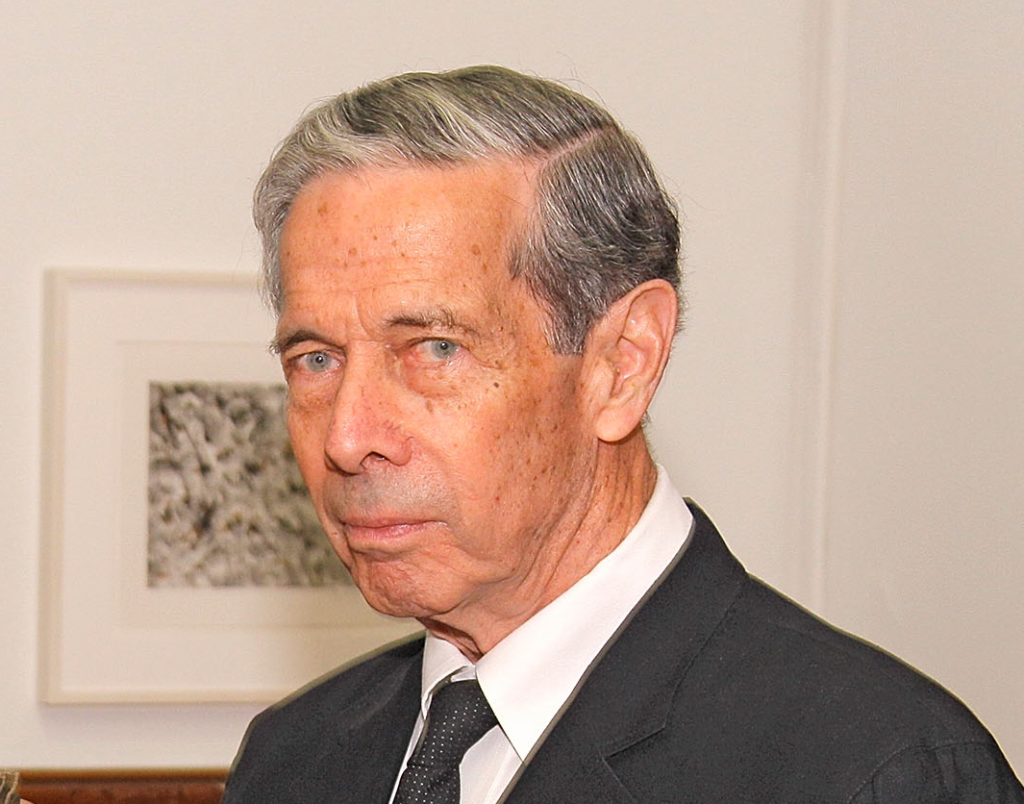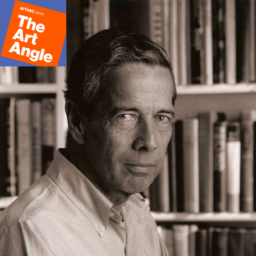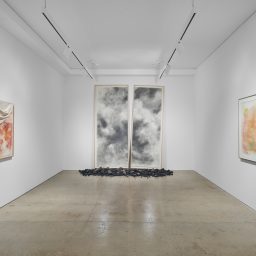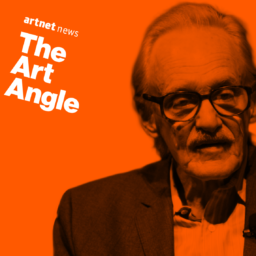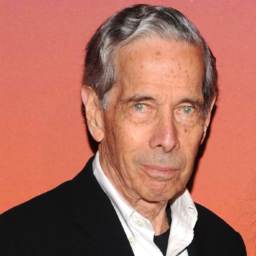Next week, when Christmas rolls around, the luckiest boys and girls of the art world may find a hefty, roughly cube-shaped present under the tree. No, it’s not a new X-Box—it’s a time machine, in the form of a collection of the dozens of artist profiles that the journalist Calvin Tomkins has written across his astonishing 60 years at the New Yorker magazine. Published in a lavish new multi-volume set by Phaidon, the compendium is called The Lives of Artists—an intentional reference to Giorgio Vasari’s revered 16th-century biographical catalogue of the greatest Renaissance artists of his day.
For Tomkins, however, his quarry has not toiled in the cathedrals and palaces of Europe, but rather in the cold-water flats and industrial lofts of the exceedingly secular modern world. So, instead of Leonardo and Michelangelo, think Damien Hirst, Georgia O’Keeffe, Andy Warhol, Cindy Sherman… the list goes on and on.
Now 94 years old, Tomkins—who is universally known as Tad—has also published 18 books about artists and the art world. But if there’s one artist he is associated with above all, it is Marcel Duchamp, the indispensable Modern artist and primogenitor of what we know today as conceptual art. If you don’t know who Duchamp is, think of it this way: He’s the guy who made it possible for the Italian artist Maurizio Cattelan to duct-tape a banana to the wall at Art Basel Miami Beach, call it art, and sell it for $120,000. Thank you very much, Marcel. But seriously, few artists are as influential as Duchamp, and yet few artists are as mysterious, with his later masterpieces of the Large Glass and Étant donnés still befuddling droves of art history PhD candidates every year.
Plumbing art’s mysteries is par for the course for an arts journalist, but Tomkins approaches his job with a just-the-facts-ma’am attitude and the hard work of shoe-leather reporting, accumulating reams of telling details that make even the most difficult artists seem accessibly human, if not easily understandable. To talk about his work, and also some of those artists, I sat down with Tomkins to discuss how he approaches his particular style of portraiture.
You can listen to a cut-down version of this interview here on Artnet News’s Art Angle podcast.
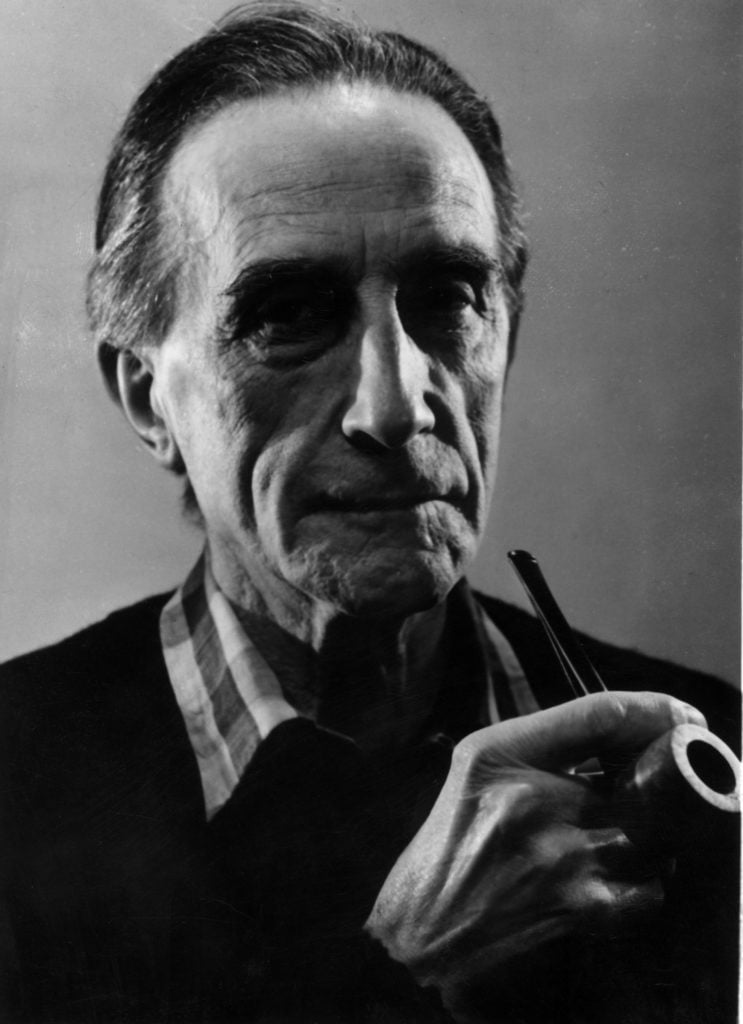
Marcel Duchamp holding a pipe. Photo by Hulton Archive/Getty Images.
Why don’t we start where your own career did—with Duchamp. Tell me, how did you first meet Marcel Duchamp?
That is the story of how I became involved in writing about art. It’s entirely by accident. I had no background in art. I took one art course in college on the Italian Renaissance. But I was writing for Newsweek magazine in the mid-’50s, and Newsweek had no art coverage in those days, and neither did Time. They covered theater and books and film and sometimes dance and quite often music, but no regular coverage of art. Once in a while, an editor would get an idea for an art story and pull somebody from another department to write it. And that’s how one day I was called out of the foreign news department and told, “Go and interview Marcel Duchamp.”
What did that name mean to you?
Well, it didn’t mean as much as it should have. I was aware of Duchamp. I knew that Nude Descending a Staircase had been the scandal of the Armory Show in 1915. I don’t think I knew that he had become an American citizen and was living in New York. He had sort of dropped out of the art world, and people who were very involved with the art world knew about him, but people outside assumed that he disappeared. And so, I came into the interview—which was in the King Cole Bar of the St. Regis Hotel—knowing very little, and I asked a lot of pretty dumb questions as a result.
For instance, I asked, “How do you spend your time now that you’ve stopped making art?” Because that was the common perception, that he had quit making art in favor of chess. Entirely untrue. He’d been working for the last 20 years of his life on a major work, Étant donnés. In any case, I asked him, and he smiled and said, “Oh, I’m a breather. A respirateur.” I enjoy that very much. And then he went on to talk a bit about, “Why do people feel that they need to work?” And this is what he did through the whole interview. I would ask him an innocuous, irrelevant, or inaccurate question, and he would, without correcting me, turn it into something strange. As a result, I felt this was the most interesting person I’d ever met.
This was decades after his signal achievements in the art world, like his “readymades,” where he tilted a urinal on its back and called it Fountain, creating a succès de scandale. You later did an interview with him over a series of afternoons in 1964 for a profile you wrote for the New Yorker the following year. At what point did you figure out that he was actually still making art, and was not just a respirateur?
Well, certainly not in ’64. I knew more about him by then, about the breadth and the importance of his career, but nobody outside of his wife, Teeny, and two other people knew that he had been at work in secret on a very strange installation. It took up a whole room and combined things that had never been in Duchamp before, such as a realistic landscape with what looked like a little waterfall in the upper-right corner, which was actually an optical trick he had made. He was a great bricoleur—he liked to make stuff—and he had taken a cookie box, put a hole in the bottom, and had a light bulb in it. Then he had a fan running so that it made a flickering effect of light on this silvery box surface. It actually looked very much like a waterfall.
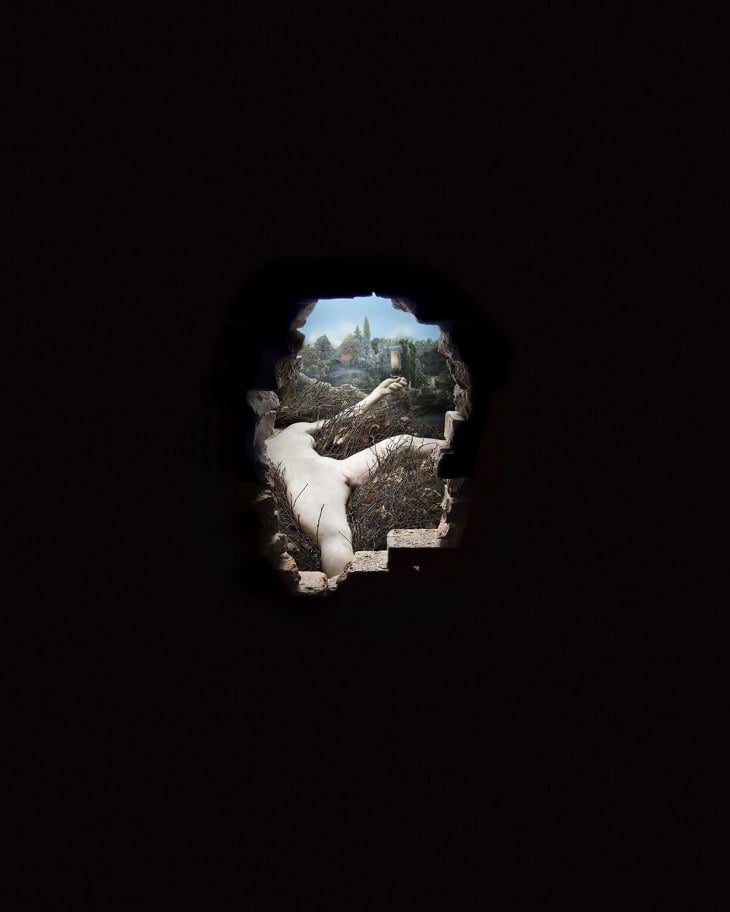
Marcel Duchamp, Étant donnés : 1. la chute d’eau 2. le gaz d’éclairage (Given: 1. The Waterfall, 2. The Illuminating Gas)(1946–66). Courtesy of the Philadelphia Museum of Art.
This artwork is now held in the Philadelphia Museum of Art, and the way that it’s probably best known among the adolescent boys of Philadelphia is as a door with a peephole through which you can peer at a naked woman lying amid a surreal, Leonardo da Vinci-esque landscape. How did you first start to get a sense that he was secretly laboring on this artwork?
This was long afterward. He didn’t divulge anything about Étant donnés until the year before he died, and he only did that because he needed to arrange for what would happen to it afterward. He died in ‘68, and then it became generally known that he had actually been at work on this thing for 20 years. But I certainly didn’t know about it when I wrote the profile [in 1965]. And Arturo Schwarz, the Italian collector and dealer, certainly didn’t know about it when he wrote his book called The Definitive Works of Marcel Duchamp.
That’s a fateful name.
The book was about to go to press and he learned about it. He flew to Philadelphia, spent a whole day looking at it and making notes, quickly went back and wrote a new chapter and got it into the second printing. But nobody knew about it [during Duchamp’s life], which was so amazing at that time, that somebody could make himself invisible.
Now, of course, the story of his secret act of creation is a big part of your magisterial 1996 biography, which is the definitive biography of Duchamp. As somebody who has spent so much time with this very elusive artist, what was he like as a person?
He was probably the most delightful person I’ve ever met. He was so comfortable in his own skin. He didn’t have any axes to grind, and he was so fascinating to talk to because the conversation would go off in directions you didn’t expect. He was unpretentious—he didn’t want to impress you. He was just happy to be in the present moment, and looking at it with fresh eyes.
It’s clear that he impressed you.
He certainly did.
How did your encounter with Duchamp and his intellectual world change your life?
A year after the first interview, I moved to the New Yorker. I had been contributing short pieces to the New Yorker for a while, and I asked Mr. [William] Shawn, the editor, if I could come on staff, and he said, “Well, you can’t make a living with short pieces, but if you can write a long piece, then we can see.” So I was looking around for a long piece.
In 1959, I was starting to write about Jean Tinguely, this Swiss sculptor who had made a big, fantastic machine in the garden of the Museum of Modern Art whose sole purpose was to destroy itself in an act of mechanical suicide. This was, of course, a major undertaking—it was very gutsy for the Modern to agree to it—and he had to have help, so he got to know a number of New York artists, one of whom was Bob Rauschenberg. And I found Rauschenberg so riveting that I wrote one of my next profiles on him. But the profile on Tinguely was what really got me into the New Yorker. While it didn’t completely set my course for the next dozen years or so, because I wrote on subjects besides art, more and more I found that I was primarily interested in artists and what they did and what they said about it. So it all just sort of evolved out of that.
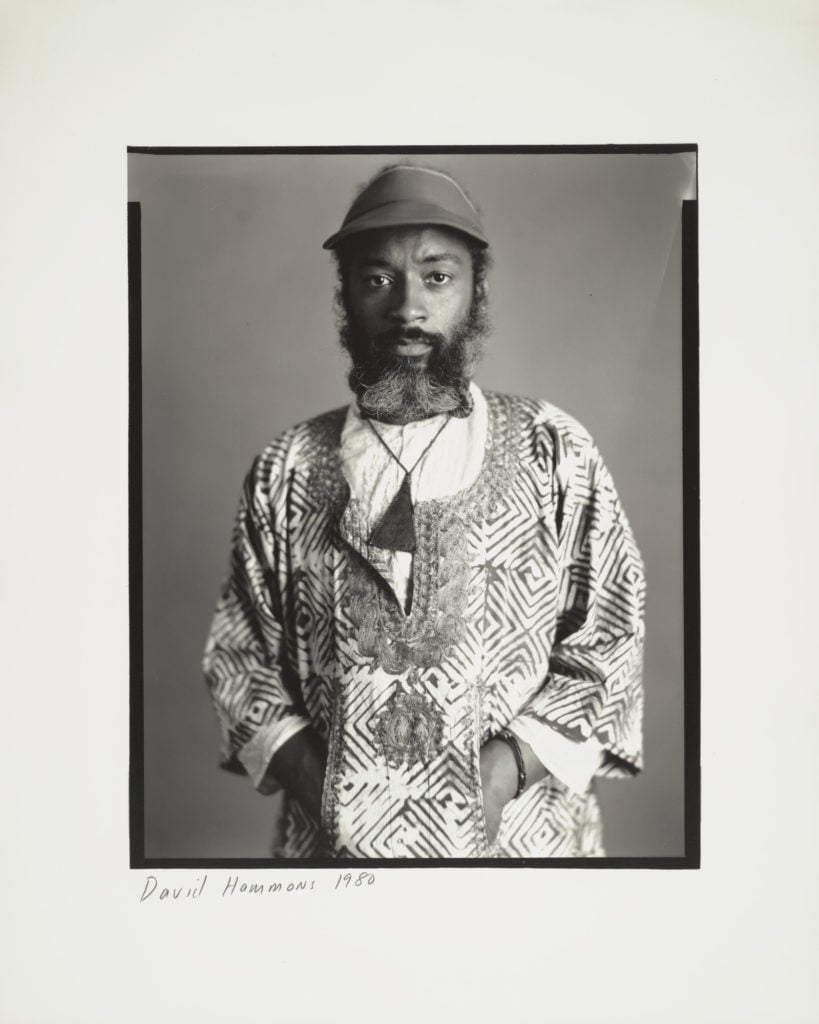
Timothy Greenfield-Sanders, Photograph of David Hammons (1980). © Timothy Greenfield-Sanders, courtesy of the Museum of Modern Art Archives.
Now, fast-forward another half century, and you just published your latest profile of an artist in the New Yorker—and not just any artist, but the legendary artist David Hammons, whose groundbreaking conceptual work has earned him comparisons to a modern-day Duchamp. In fact, he might be even more mysterious and elusive than Duchamp, because he has only given a small handful of interviews over his entire life. He’s kind of the J.D. Salinger of the art world.
Yes.
What made you decide to interview him, or to try to interview him?
What had given me the idea was a new public artwork he is doing for the Whitney, a sort of ghost image of a pier. I heard about it a year before the Whitney’s new building was finished, when they invited a number of artists to walk through the galleries, and Hammons was invited. Of course, they had a hope that he would do something for the museum, which was almost completely ridiculous—what Hammons liked doing most was refusing commissions from museums and major collectors. Adam Weinberg, the director, was standing by one of the big windows overlooking the river, and he said to Hammons, “You know, right down there was the pier that Gordon Matta-Clark had turned into a public monument in the early 1970s.”
The pier was no longer in use, and Matta-Clark had gone in without permission and cut four very large openings in the roof and the walls and the floor and figured out how these would enable light to come in at different times of day. He saw it as a public work, and he really hoped it would become a kind of Mecca for the gay people who had turned this and other piers into meeting places. And so, according to Adam, Hammons listened carefully, but he didn’t say anything. Then two days later, the Whitney got a letter in the mail with no explanation but with the drawing of what looked like the ghost image of a pier, just a kind of schematic version of its interior structure floating in the water, and underneath it said, “A monument to Gordon Matta-Clark.” No further explanation. Adam and the other curators had no idea what it meant.
Was this a proposal? Was this a thank you for the walkthrough? They didn’t know, and because everything was so frantic getting ready for the museum’s opening, they didn’t answer the letter for a while. Eventually, one of the curators began having meetings with Hammons, sounding him out on the idea, and this led to investigations of whether they could actually build something like this. Now it is about to become a reality, and the contractor says it will be finished by next September. It’s not going to be used for anything. I mean, it’s an image. When the Whitney people asked Hammons if he wanted it to be lit up at night. He said, “No, it should disappear.” Anyway, when I first heard about this project, I thought I would try to write, if not a profile, then some sort of a piece.

A rendering of David Hammons’s homage to Gordon Matta-Clark, Day’s End (rendering). Image courtesy of Guy Nordenson and Associates.
He has refused pretty much every journalist who has ever reached out to him, and there’s even a kind of a ring of other artists and collectors and curators and dealers that surrounds him, almost like the Knights Templar protecting the grail. How did you manage to crack the defenses around David Hammons?
I don’t think we did. Dodie [Kazanjian], my wife, was working with me on this, and we went mainly through Lois Plehn, an amazing woman who works with Hammons. She has no official position—he’s never had a dealer who represents him, but she’s the closest thing to that, and one of her main jobs is keeping the people who want to talk to him away. So we made contact with her, saying we’d like to talk to David. And that didn’t happen for quite a while, but she did arrange for us to have dinner with him at a Japanese restaurant. Later, Hammons agreed to a retrospective in Los Angeles last summer, not with a museum, but with the mega-dealer Hauser and Wirth.
He had been refusing museums all over the world for a long time, and I think the reason David went with them was because he felt—rightly—that he would be able to control the exhibition, absolutely himself. And Hauser and Wirth indeed gave him full control of what he would show, how it would be shown, how it would be presented, installed, everything. This was big news in the art world, of course. And so we went out there a few days before the opening, and Hammons was there. He had been working extremely hard. He’s one of the hardest-working artists ever—he never stops working, and he had practically done the whole installation himself.
There was no possibility to see him during this frantic period, but on the pre-opening night, there was a small dinner and—I think through the machinations of Adam Weinberg and Lois Plehn—I was seated next to him. So there was another little conversation and, as we were leaving that night, I said, “I very much would like to sit down and talk with you.” And he said as he was leaving, “Yes, come to my studio in the fall.”
An unbelievable coup.
Lois was very dubious. She said, “You know, he changes his mind all the time. He may not do it when you show up.” But at the end of August, we got a call from Lois saying, “He will meet with you and your wife in his studio in Yonkers for one hour on such-and-such day.”
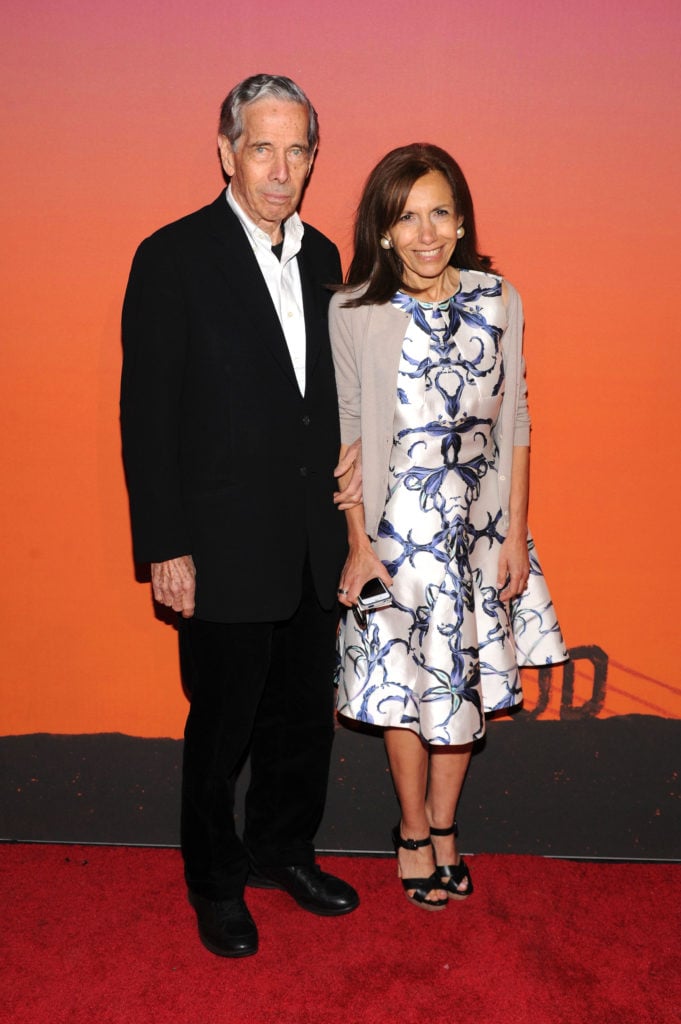
Calvin Tomkins and Dodie Kazanjian at the Whitney Museum. Photo by Bryan Bedder/Getty Images for Whitney.
Here I should point out that your wife, Dodie Kazanjian, is a very accomplished journalist and curator in her own right, and she’s your secret weapon, reportorially speaking.
Yes, and she was crucial in this whole process. We were early, so we drove around Yonkers until the appointed hour, and he let us have, not an hour, but an hour and 20 minutes. But no interview.
Yikes.
He said he doesn’t give interviews, they remind him too much of interrogations, of being a young black man growing up and always being stopped by the police, asking questions like, “Is that your bicycle?” or, “What are you doing in this neighborhood?”
That’s understandable, of course. But speaking as a journalist myself, if I had finally reached David Hammons’s inner sanctum and was standing with him in his studio and he suddenly said, “Oh, by the way, no interview,” I think I would have probably had a heart attack. How did you navigate that obstacle and still manage to get the material for your piece?
After he had made it clear that he would not submit to an interview, he said, “Well, all right, we’ll have a conversation.” And we talked a little bit, and then he opened the door to his studio. We had previously been out in the hallway, and we went into his studio, which is a very large room with high ceilings, and we sat down. And we had a conversation. With every profile, I have learned something. In this profile, I learned that, yes, it is possible to write about somebody without interviewing them. We were not allowed to record, but there were enough things that we were able to piece together from our memory. As he became more relaxed, he was very jokey.
He seems to be somebody who is most comfortable being in control of every aspect of what he’s doing. Even so, the profile that you wrested out of him is a great profile, and it’s not great only because Hammons is this un-track-downable figure. It’s just a great profile. And you described him as being a kind of eccentric character, wearing a set of glasses with a lens for his third eye positioned between his forehead. Can you paint a picture of what David Hammons is like for all of us who will never get a chance to meet him?
Once he lets you in, he’s very winning. He speaks very softly but somehow very audibly—you can hear everything he says even though he’s talking in a very quiet voice. And he’s very funny. He has a great sense of humor, and he likes to exercise it. All of a sudden, he was very pleasant to be around. In this way, he’s a little bit like Duchamp, where he was so comfortable in his own skin, never embarrassed or never taken aback by anything. Hammons’s mind is also very nimble, skipping from subject to subject in a sort of a dance-like pattern. And the things he says are very unexpected.
This is the first installment of a two-part interview. To hear highlights from the conversation, tune in to this week’s episode of the Art Angle podcast, which will be released on Tuesday.
